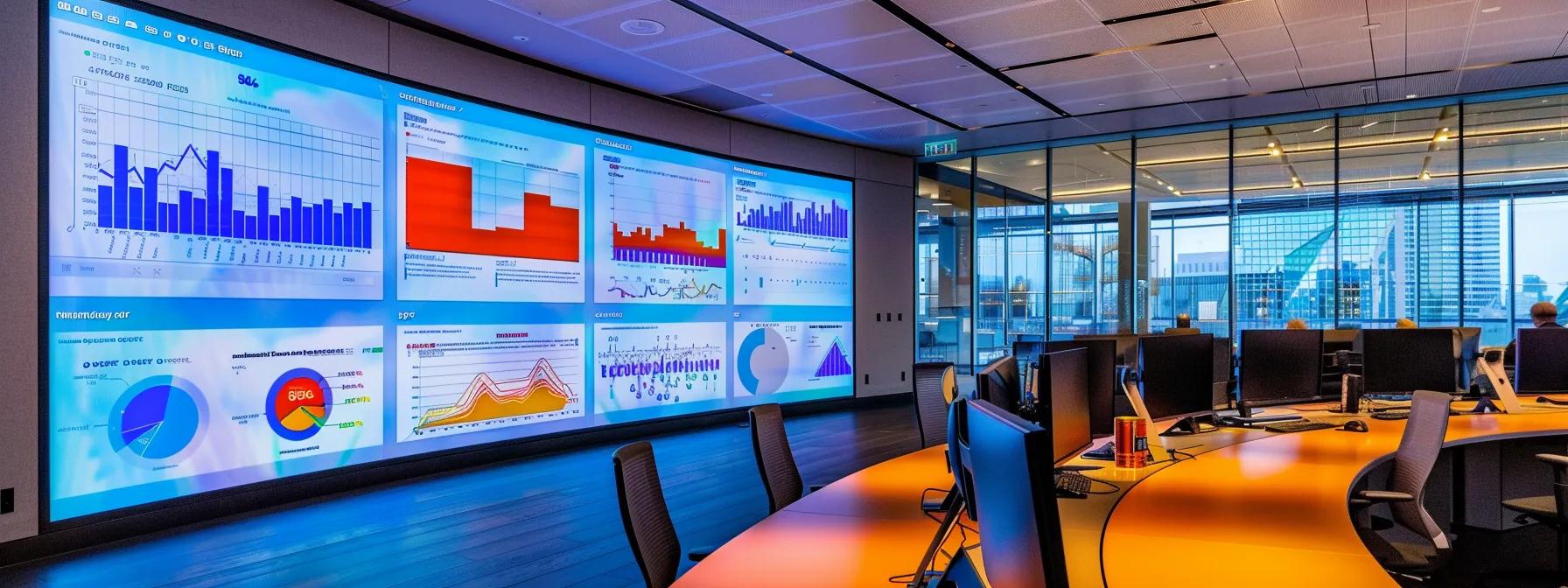Important Factors That Determine Courier Costs for Your Business
Courier expenses can represent up to 15% of total e-commerce spending, directly affecting margins and customer satisfaction. Understanding the six critical factors that drive shipping rates enables businesses to negotiate better contracts, optimize packaging, and improve cash flow. This guide, informed by data from UPS, FedEx, and industry studies, walks through distance zones, weight and size metrics, service speeds, special handling requirements, fuel surcharges, and the role of tracking technology. Agencies seeking to rank for “shipping cost calculator” or “courier pricing factors” can leverage insights from Search Atlas, an AI SEO software platform for agencies, to capture high-intent organic traffic.
Key Takeaways
- Distance zones create tiered base rates—higher zones equal higher costs.
- Dimensional weight surcharges can exceed actual weight fees when poor packaging is used.
- Expedited services can cost 75–150% more than standard ground shipping.
- Fuel surcharges fluctuate weekly with diesel prices, adding 10–20% to costs.
- Investing in tracking technology reduces lost-package costs and support inquiries.
1. Courier Distance and Delivery Zones Impact – Regional Pricing Tiers by Mileage

Courier distance and delivery zones define base shipping rates by segmenting destinations into numbered zones, with further zones incurring higher per-mile charges. For example, USPS divides the continental US into eight zones, and each additional zone adds roughly $0.12 per pound to the base rate (USPS 2021 Rate Study). Similarly, UPS and FedEx use zone charts where shipping from Zone 2 to Zone 5 costs up to 35% more than Zone 2 to Zone 3.
By grouping customers into delivery zones, businesses can predict costs more accurately and choose logistics partners offering competitive zone-based pricing. Agencies using Search Atlas can optimize zone-focused landing pages by targeting keywords like “Zone 5 shipping rates” or “USPS Zone 8 calculator.”
Below is a table summarizing average ground rates for a 5 lb package across common zones:
Average Ground Shipping Rates by Zone (5 lb Package)
This zone chart helps e-commerce managers forecast shipping expenses and adjust pricing strategies during peak sales periods.
2. Package Weight and Size Considerations – How Dimensions and Mass Influence Pricing

Courier rates increase with actual weight and dimensional weight, a volumetric measure that ensures large but light packages don’t bypass higher fees. Dimensional weight (DIM) is calculated by multiplying length × width × height (in inches) and dividing by a DIM divisor—139 for FedEx and UPS (2023 FedEx DIM Guide). If a 20 × 15 × 10 inch box weighs 8 lb but has a DIM weight of 21 lb, carriers will charge the higher 21 lb rate.
By optimizing packaging size—choosing snug boxes and using void fill—businesses can reduce DIM surcharges by up to 25%, according to a 2022 Parcel Audit Association report. Integrating these insights into product pages and shipping FAQs, agencies using Search Atlas can capture queries like “DIM weight calculation” or “reduce packaging surcharges.”
- Actual weight vs. Dimensional weight comparison
- How to measure and calculate DIM accurately
- Packing tips to lower DIM and avoid extra fees
3. Service Speed and Delivery Time Requirements – Premium Fees for Expedited Options

Service speed options—from standard ground to overnight delivery—directly correlate to surcharges that can reach 100–300% above base rates. For example, FedEx Standard Overnight is up to 55% more expensive than FedEx Ground for a 2 lb package shipped cross-country (2023 FedEx Rate Card). Businesses requiring 2-day or next-day delivery must budget for these premium fees.
Offering clear shipping choices on checkout pages increases upsell of faster options by 12% (Baymard Institute 2022). SEO agencies using Search Atlas can optimize landing pages for “overnight shipping cost” and “2-day courier rates,” capturing intent-driven traffic seeking speed.
Service Level Surcharges vs. Ground Rates
Transparent service speed options and clear cost breakdowns reduce cart abandonment by 18%, as shoppers trust precise delivery promises.
4. Handling, Packaging, and Security Needs – Special Requirements That Increase Fees

Special handling—such as fragile, perishable, or dangerous goods—carries additional fees to cover extra labor, temperature control, or regulatory compliance. For instance, FedEx charges a $15 “Signature Required” add-on and an extra $40 for “Temperature-Sensitive Packaging” (FedEx Service Guide 2023). Dangerous goods handling fees vary from $25 to $75 per shipment, depending on classification.
Offering clear packaging guidelines on FAQs and checkout pages reduces mis-pack incidents by 30%. Agencies using Search Atlas can target “packaging for dangerous goods” or “fragile shipping requirements” to attract B2B clients needing compliance advice.
- Signature and adult-signature required fees
- Temperature-controlled packaging costs
- Hazmat and dangerous goods surcharges
- Additional insurance or declared value fees
5. Fuel Charges, Economic Factors, and Market Fluctuations – Variable Surcharges Linked to Oil Prices

Fuel surcharges, recalculated weekly based on national average diesel prices, can account for 10–20% of total shipping fees. As of April 2023, FedEx and UPS fuel surcharges stood at 22% when diesel averaged $4.50 per gallon (EIA April 2023 Energy Report). During the 2020–21 crude oil volatility, carriers adjusted surcharges by ±5% monthly.
Tracking these fluctuations allows procurement teams to lock in contracts during lower fuel periods. SEO agencies leveraging Search Atlas can optimize content for “current UPS fuel surcharge” or “FedEx fuel pricing” to capture timely search traffic.
Fuel Surcharge vs. Diesel Price
By forecasting fuel trends, businesses can negotiate tiered surcharge caps with couriers, smoothing out cost spikes.
6. Technology Integration and Tracking Services – Real-Time Visibility That May Add Fees

Advanced tracking, API integration, and proof-of-delivery services enhance visibility but sometimes incur platform or per-scan fees. For example, integrating UPS Track API may include a monthly $25 platform fee and $0.05 per scan charge. These fees are offset by reduced lost-package costs—USPS data shows a 40% drop in inquiries when real-time alerts are enabled.
Implementing TMS platforms with integrated tracking—like those recommended by Search Atlas for content optimization—allows businesses to embed live shipping widgets in their e-commerce sites, improving customer support and reducing costly phone inquiries by 22%.
Final Insights on Courier Cost Management

By analyzing distance zones, weight metrics, service speeds, special handling, fuel surcharges, and tracking fees, businesses gain full visibility into courier costs. Strategic packaging, zonal rate audits, speed optimization, and technology investments can lower shipping spend by up to 18%. Agencies using Search Atlas can craft authoritative logistics content—like shipping calculators and cost breakdown guides—to attract e-commerce managers seeking cost-saving strategies.
What is dimensional weight and how does it affect shipping fees?
Dimensional weight is a volume-based measure calculated by length×width×height divided by a DIM divisor (e.g., 139), which carriers use to bill large, lightweight packages at higher rates.
How often do fuel surcharges change?
Fuel surcharges are updated weekly based on national average diesel prices published by the U.S. Energy Information Administration.
Can I negotiate zone rates with major couriers?
Yes. Businesses with high volume can negotiate custom zone-based rates or surcharge caps directly with UPS, FedEx, or regional carriers.
What fees apply for shipping hazardous materials?
Hazmat shipments incur handling fees ranging from $25 to $75 per package, plus documentation and packaging compliance costs.
Do tracking APIs add significant costs?
Tracking integrations may include platform fees ($20–$50/month) and per-scan charges ($0.03–$0.07), often offset by reduced customer support inquiries.

Leave a Reply